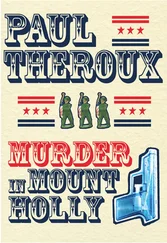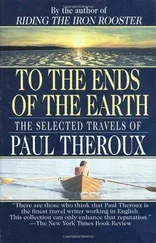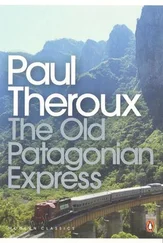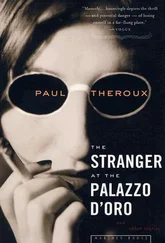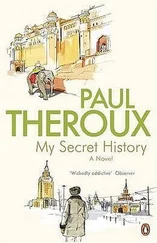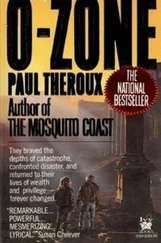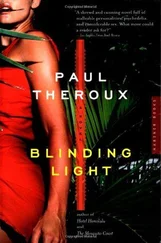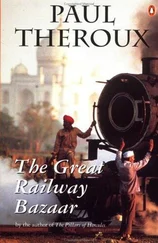But when I showed her the pictures, to prove she was a woman who had power — yes, a priestess — she mocked them. “You can see my raggedy petticoat,” she said; or, “I’m all backside in that one.”
What she wanted from me were pictures of Orlando. I had hundreds of them, which she sorted, choosing the ones I had done of her and Orlando together. She gave them back to me the next day cracked and curled, as if she had crushed them against her breast.
With such primitive equipment to work with, I had to depend on effects. At that time I was terribly interested in back-lighting, shooting into the sun to make the smallest object explosive with unlikely halation. I could deepen the picture with dimension, creating giant spaces, so that a crowd of people looked like an obstacle course, or I could bring that young man in the foreground close enough to kiss.
In one of Phoebe’s favorites, Orlando stood soaking wet in a spring storm of rain and sun, with his white shirt open and his fountain pen bleeding in his pocket, his arm around Phoebe, who held an umbrella over her own head — a pair of rainbirds. In another, he was removing a speck from her eye, with his hands framing her face, and peering at her, his head tilted as if he was pronouncing a blessing. A third was of Orlando alone, leaning out of the windmill door, listening because he had heard a noise, which was me sneaking up on him: I took that picture hunkered under him, before he saw me, while he was still holding his breath and poised as if about to launch himself from the porch.
These pictures were better than any of the more famous ones I did at the time. The critic who had praised my Provincetown show in the Transcript would have keeled over if he’d seen them. But I kept them private and only showed them to Phoebe. It was her fascination for them that impelled me to act.
Her borrowing them excited me and made me jealous. Not that I was worried about her, but I knew there must be others who had their eye on him. To me the pictures were much more than souvenirs of Orlando, more than pretty relics I had hoarded. I had concentrated all the skill I had on him, so that in taking the picture of my love I had recorded a moment of communion. Though I did not appear in any picture I believed my heart’s eye to be visible at a decisive moment of light. It was impossible for me to see anyone holding these pictures and not resent their intrusion, since they were using me to see him and loving him with my eyes.
The lust of the eye. The best photographs were, to me, like an experience of drowning. You were swamped and sunk and then made strangely buoyant. You floated away changed. My pictures of Orlando had this effect on Phoebe. She saw them and loved him — loved him for my pictures.
Another summer had gone, the hurricane damage was repaired and I was faintly ashamed of the pictures I had done of the storm’s aftermath: ordinary pictures of sensational ruin. Surely a picture had to be more than subject? I had to get busy and do something new. This season was for action — fall was purposeful in Massachusetts.
Here, every month smelled different, and the aromas of autumn, a richness of mellow leaf-dust, the scent of bonfires and pine needles and the low haze of woodsmoke — the sea-mist in the mornings, the clear, iron-dark nights — sharpened my mind with enterprise. Those sensations and the coaly presence of trains fizzing busily at little tile-roofed stations, more particular and blacker when the trees were going bare. In those days a passenger train ran from Hyannis to South Station in Boston, taking in Sandwich and crossing the Canal at Buzzard’s Bay before heading for the shoe mills of Brockton and Southie’s tenements. In the late spring the train was full of lady schoolteachers and their bikes; in summer, campers and families. But after Labor Day it traveled nearly empty, a great dusty chain of coaches. It was noise, the clatter of boiler plate rattling through the low woods of the Cape leaving fragile lengths of smoke behind; and an engineer with his grinning grubby face and striped cap and blue elbow at the locomotive window.
The folks were in Florida “having a swell time.”
I detached myself from Phoebe and boarded the train. I had no idea of what I was going to do, and had brought my camera in the hope of finding an extraordinary picture, the Life cover that would convince Orlando I was worthy of him. When the black conductor came over to punch my ticket I almost grabbed his sleeve. I could tell he was hiding uneasily under his uniform, but I wanted him to know that he had nothing to fear from me, that I was the girl who had been written up in the Transcript for her Provincetown pictures, that I felt forlorn and black behind my own white eyes searching for my brother’s heart.
Every time I opened my mouth I knew I was talking to myself. It was to steady my own mind that I said to this black ticket-puncher, “I think the world of you people.”
He flashed me a nice smile that was a little hungry and a little lonely, and afterward I wished I had taken his picture: the cracked visor and tarnished badge, shiny thick cheeks, wide hairless nostrils, and a gold tooth he let glitter for a few friendly seconds before he chewed and swallowed it. The wrinkles on his neck were rimed with sweat-froth, the fabric of his jacket sleeve was worn to a grid of threads, and his hands, which were three distinct colors, smelled of bacon. Like all missed opportunities (he was wonderfully back-lit; in tight close-up you could have jumped down his throat) it remained vivid in the picture palace of my mind.
At South Station I bumped against the world again after the rolling seclusion of the train. People were active here; the marble floor transmitted the clang of luggage carts and I had that sense I always got in railway stations, of being in a cathedral — the muffled quaking voices, the echoes of insignificant sounds made important by the hugeness of the ceiling. It was still early, hardly two o’clock, and because I had not made up my mind about what I was going to do, I decided to walk the length of Atlantic Avenue and then cut through the North End to the Charles.
I didn’t take any pictures. Number one, I was walking away from the sun. The gritty light leached the brickwork and the cobbled avenue of interest; the best pictures were behind me, between me and the flaring sun. Number two, I had chosen this stroll by the wharf area for pondering my next move with Orlando. It wasn’t the attraction of the wharves. Even then, the picturesque made me sick — I avoided it and hoped that people would see me in my pictures more than was there, see them as more complete than they were, as I sought the ambiguity of shape in the echo of image, so that up close what had looked most definite to the observer turned into grains of soaking light, as it might appear to someone drowning in the sea on a beautiful day.
There were fish reeks from the barrels of scraps and a whiff of horses from Haymarket Square. The air was crusted with salt and charged with cold sea smells and slime. But the harbor was hidden by the warehouses. I played with the idea, one that was to puzzle me for years, of taking a picture of this air and trying to suggest the seascape that made it so pungent, of using the light to mention the smell and that smell disclosing an enormity that could be sensed but not seen, like the harbor. The idea drove me to tinker at the margins and crop the obvious. I never considered a good portrait to be a big plain face, the nose dead center in the square, the glum puffy-faced madonna that painters favored. I was after the iridescent shadows of telling aromas, the black hand smelling of fatback bacon. I had looked hard at the work of other photographers. Stieglitz’s painting-like faces were calculated to look full of the past. But I could not see the art in that — I wanted the portrait’s future, too. Edward Weston, who had boasted that his eight-by-ten view camera weighed forty pounds with its tripod, said, “Miss Pratt, American faces are all landscape,” by which he meant that if he was doing a Nebraska farmer there would be furrows plowed across the man’s brow, and a backwoodsman would have a grizzled face, and your beachcomber would look like a hunk of driftwood. It was cheating, matching the face to the landscape, ignoring the Yankee who didn’t have crags and making every butcher look like a mindless meat-cutter — what if he had fine sensitive hands? I was not interested in only telling people what they knew, showing the past or present scribbled on a person’s face. I wanted to portray the future in the depths of his eyes, what he would become, a harassed father in that bratty child, a bard in young Cummings, a con man in that artist; the suicide in the actress, the bankruptcy in the tycoon, the hag that would overtake the glamorous woman. A face was more than an inner state — it was a history of the person’s life, some of it yet to be lived. The infant’s death mask: it was the photographer’s job to reveal it, to make the future visible, to use the camera to improve upon the eye. I was studying the possibilities of this — light as odor, mortal shadow as time future — when, after a few blocks of Atlantic Avenue, I saw a spill of Italians, and further on, dockers lounging to remind me that I was a woman and trying to intimidate me with their stares — challenging me to stare back, as men do in their silly little gangs to make women feel defenseless.
Читать дальше

